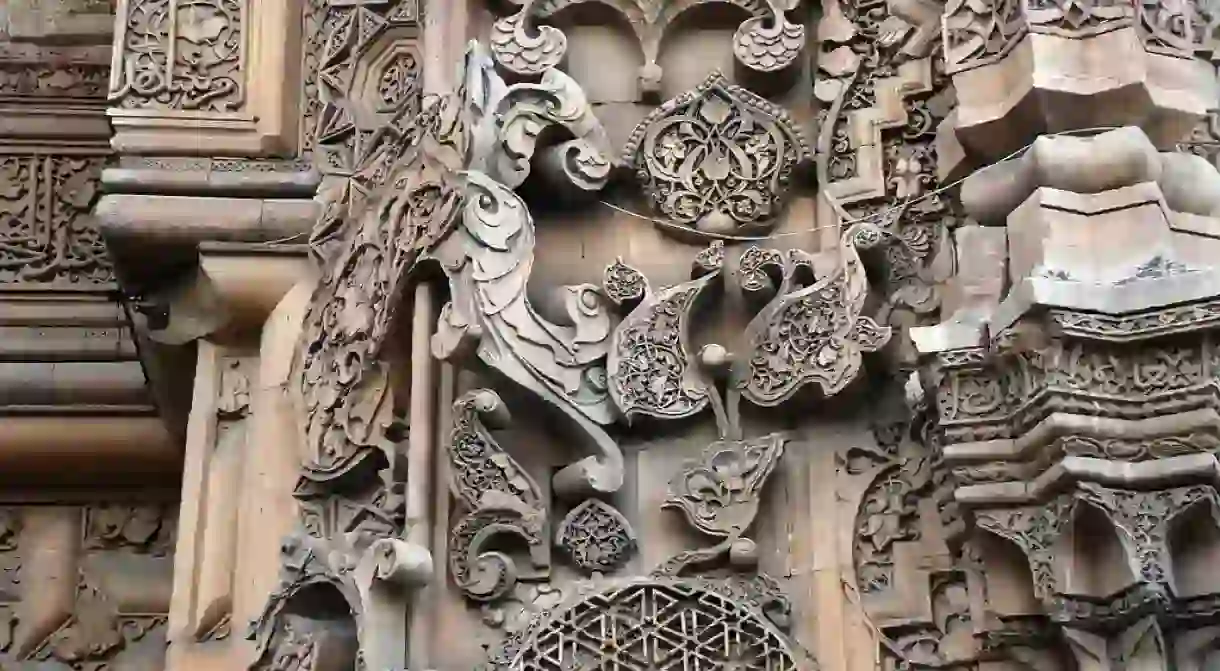UNESCO Heritage Sites in Turkey You Need to Visit Right Now

There’s a wealth of history in Turkey from ancient civilizations to powerful empires and the birth of a republic. Here are some amazing places you should check off your own travel list while you’re in Turkey, due to their inclusion in the much-respected UNESCO World Heritage List.
Aphrodisias

This ancient Greek city, located in southwestern Turkey in the Aydın province, continues to impress visitors with its archaeological site, marble quarries, and the temple of Aphrodite that dates back to the 3rd century BCE.
Archaeological Site of Ani
Church, Ruins
Quite the surreal sight, Ani, located on a secluded plateau that overlooks the Turkish and Armenian border, was a medieval city that flourished in the 10th and 11th centuries when it was the capital of the Bagratides Armenian kingdom.
Archaeological Site of Troy
Ruins
One of the most famous archaeological sites with a history that spans back around 4000 years, the uncovering of Troydemonstrated the first contact between Anatolian and Mediterranean civilizations.
Bursa and Cumalıkızık
Once the capital of the Ottoman Empire, the city of Bursaas well as the nearby village of Cumalıkızık exemplify the urban and rural system that established the Ottoman Empire.
City of Safranbolu
Famous for its Ottoman era structures built around 1322, which later influenced the urban development in the Ottoman Empire, Safranbolu was an important station for caravans that traveled along the main East-West trade route.

Ephesus
Museum, Ruins
One of Turkey’s most popular tourist sights, the monuments belonging to the Roman Imperial period at Ephesus are impressive due to the well preserved states, most notable the Library of Celsus.
Great Mosque and Hospital of Divriği
Mosque

A masterpiece of Islamic architecture, the Great Mosque of Divriği is located in the Sivas province and impresses with its advanced vault construction and beautifully ornate decorations.
Hattusha
Archaeological site

The former capital of the Hittite Empire continues to impress even as an archeological site that exhibits notable urban organization as well as the beauty of rich ornamentation found at the gates.
Historic areas of Istanbul
The former capital of the Ottoman Empire, there’s plenty of historical sites in Istanbul from the Hagia Sophia to the Hippodrome of Constantine, the Süleymaniye Mosque to the Chora Church and much more.

Nemrut Dağı

The hike up this mountain is rewarded by the sight of the mausoleum of King Antiochus (who ruled over the kingdom of Commagene) a site considered to be one of the Hellenistic period’s most ambitious works.
Neolithic Site of Çatalhöyük
Çatalhöyükis one of the world’s most important archeological sites because of the discovery of wall paintings, reliefs, sculptures, and more demonstrating the evolution of social organization and culture.
Pergamon
Theater

Once the capital of the Attalid dynasty, Pergamon was founded in the 3rd century BC and continues to stun visitors with the remains of such structures as the steep theater, the Kybele Sanctuary, and the Great Altar of Pergamon.
Selimiye Mosque and its Social Complex
Mosque

Considered to be one of Mimar Sinan’s greatest works, the Selimiye Mosque in Edirne impresses with its vast structure and tile work in its exterior that exemplify the apogee of the Iznik art.
Xanthos-Letoon
Archaeological site

Once the capital of the Lycian Empire, this archeological site in Antalya, which displays the most unique architecture belonging to the Lycians, was vital in the understanding of the Lycian people as well as their language.
Göreme National Park and the Rock Sites of Cappadocia
Park

It’s no surprise that the truly mysterious landscape of Cappadocia — with its erosion formed fairy chimneys, underground cities, and rock sanctuaries — is on UNESCO’s list.
Hierapolis-Pamukkale
Ruins, Spa
The white travertine terraces of Pamukkaleare a truly exceptional natural landscape as well as the nearby ruins of the thermal spa of Hierapolis established by the kings of Pergamon in the 2nd century BC.













